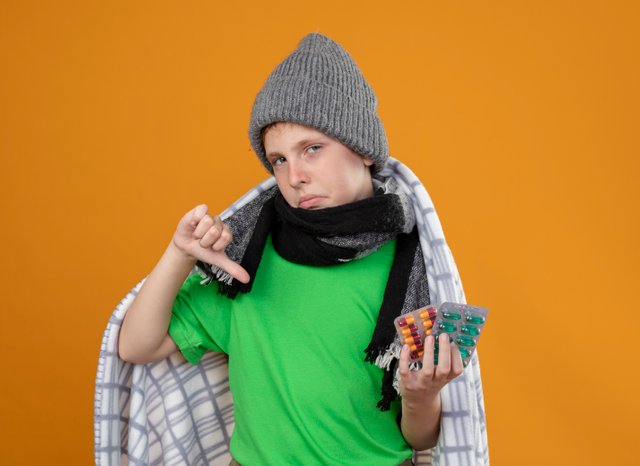Influence on Adolescent Behaviour

Immagine di KamranAydinov su Freepik
It is not news that teen behavior is alarming globally. We hear different stories of young people involved in risky and dangerous activities, such as sexual activity, substance abuse and more.
It is believed that these teens were influenced or forced to do
all these actions. What do you think? Do you also think that family may have a
greater role in influencing them?
- What is teen behavior? Explain it in 150 words.
- Explain at least 3 factors that influence teen behavior.
- How do social media and family influence teens' self-esteem and perception of others?
- Do you think their mental health is affected by peer pressure or
social media?
Adolescence is the phase of life during which a person leaves behind the time of childhood and grows to become an adult: generally the period of adolescence goes from 12 to 19 years, with some variables, because some individuals can be precocious, while other times there can be slight delays in physical, sexual, cognitive development, for various reasons.
Behavior is the outward manifestation of one's interiority, of one's psyche, through attitudes and actions towards oneself, others and the environment.

Immagine di peoplecreations su Freepik
There are some behaviors that most adolescents have in common and that are very widespread, so much so that we speak of "adolescent behavior". For example, adolescents tend to rebel against the rules imposed by their parents and in general to transgress the rules that come from society, to affirm their own way of thinking and also to experiment with what are the limits, consequences and sanctions that they may face. Often, adolescents perform challenges of strength and physical resistance to test the limits of their bodies: overcoming daring and sometimes dangerous challenges increases their self-esteem, that is, it makes them feel strong and capable. In order to feel strong, independent and "older", adolescents want to experiment with things that are part of the adult world, forbidden to children, including unhealthy and dangerous ones, such as alcohol, smoking and drugs.

Immagine di stockking su Freepik
Adolescents tend to adopt clothes, language and attitudes that conform to the peer group they belong to, of which they try to be a part and within which they compare themselves. On the other hand, there are moments in which the adolescent isolates himself because he is afraid of the outside world and how he might be perceived and judged by others: this is due to the fact that he has not yet developed a clear and secure identity. These behaviors are linked both to the need to detach oneself from parental control and care and to affirm one's autonomy, and to the need to be accepted by the peer group: in fact, parents are no longer the only point of reference, but peers and society also become so, within which the adolescent feels he or she must find his or her place. In fact, adolescents have the difficult task of creating and discovering their own identity.
The behavior of the adolescent is influenced by the parents. In fact, if the parents are too authoritarian and exert hypercontrol over their child, the adolescent tends not to communicate, to isolate himself, lacks self-confidence and is unable to act with the right independence. If the parents are too permissive, the adolescent feels that adults do not care about him and that they are not available to help him and therefore there is the risk that he will behave in a deviant or self-harming way. If the parents prove to be authoritative, that is, they provide the child with rules accompanied by explanations and involve him in discussions and family decisions, the adolescent is able to behave independently but responsibly and collaboratively, because he feels guided and supported.
Another factor that influences the behavior of the adolescent is the group of friends. The adolescent no longer lives exclusively within his or her family of origin, but thanks to school and free time activities, he or she expands social relationships to an ever-increasing number of people, many of whom are adolescents; groups of friends are created to support each other among peers during the adolescent phase, full of doubts, problems, challenges to face, things to know and to learn. To feel more united, to distinguish themselves from adults and children and to protect themselves from the “threats” of the outside world, still dark and mysterious and therefore “scary” in some ways, adolescents of the same group share the same clothing, the same language, the same ideas and the same behaviors. Therefore, every
adolescent behaves according to the expectations and rules of his or her group, to
be accepted, to test themselves outside the family sphere and to try to find a place in society.
A third factor that influences the behavior of adolescents is school, a place attended by adolescents for many hours every day; if the school environment is effective from an educational point of view, the adolescent studies with commitment and develops self-confidence, while following a path that leads him to discover his potential and his limits, to finally be able to make conscious and autonomous life choices, especially professional ones. If, on the other hand, the school environment is degraded and of little pedagogical value, the adolescent could have difficulty falling asleep, organizing his studies, achieving his goals and therefore could adopt deviant, hostile, aggressive behaviors towards peers and adults, or become lazy, depressed, anxious, confused or even suffer from panic attacks. Social networks offer the adolescent ideas, lifestyles and adult models to which he can refer and imitate, in order to build his own identity. These models are not always realistic and it is not always desirable to follow them. But the adolescent needs models to
look up to and, having identified their favorite influencers, tends to dress, talk and
behave like them. Often adolescents perceive that their body, their lifestyle and
their personality do not meet expectations, do not reach the levels of the
chosen models and this could lead them to despise themselves, with serious
repercussions on their self-esteem; this could lead to problems of depression or self-harming attitudes, if there is no support from family, friends and educational figures. I think that the mental health of adolescents is influenced by the pressures and expectations of peers (as a group to be accepted by) and social media (which shows models, sometimes unrealistic or of dubious ethical-moral value to look up to), because if, as almost always happens, expectations are not met, one is excluded from the group or perceives oneself as a person of little value. Self-esteem is important but it is also important to know yourself, your limits and your potential and accept yourself for who you are, in your uniqueness. The adolescent, without the support of the family and other significant adults who guide him on the path of exploration and self-acceptance, in the face of failures and unfulfilled expectations, risks feeling inadequate and then sad or angry; this threatens his mental health and negatively affects his behavior, which can become deviant and aggressive or tend to self-isolation.
Being aware of the factors that influence the behavior of adolescents is the first step to support them constructively along the road to adulthood.
Thank you for reading my contribution!! See you in the next post

Upvoted! Thank you for supporting witness @jswit.